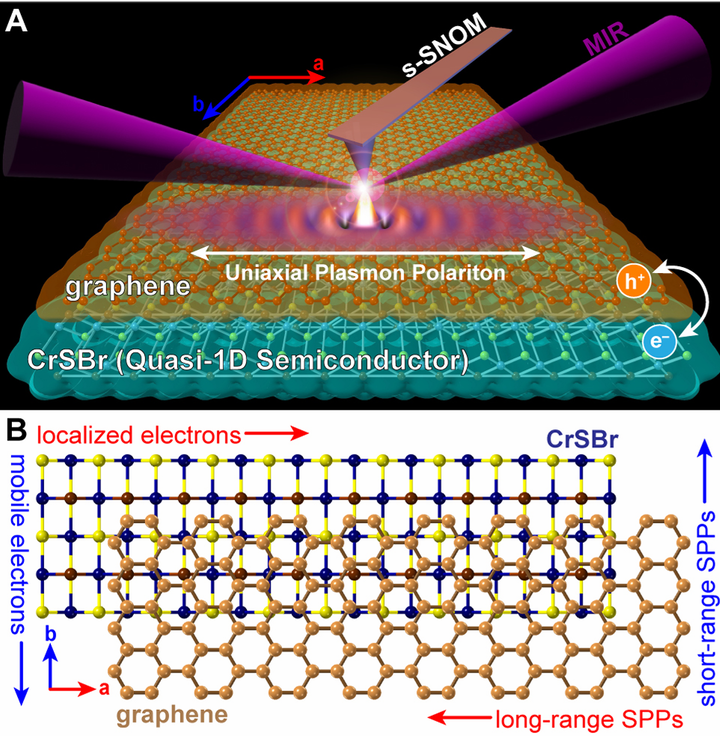Engineering anisotropic electrodynamics at the graphene/CrSBr interface

Abstract
Graphene is a privileged 2D platform for hosting confined light-matter excitations known as surface plasmon-polaritons (SPPs), as it possesses low intrinsic losses with a high degree of optical confinement. However, the inherently isotropic optical properties of graphene limit its ability to guide and focus SPPs, making it less suitable than anisotropic elliptical and hyperbolic materials as a platform for polaritonic lensing and canalization. Here, we present the graphene/CrSBr heterostructure as an engineered 2D interface that hosts highly anisotropic SPP propagation over a wide range of frequencies in the mid-infrared and terahertz. Using a combination of scanning tunneling microscopy (STM), scattering-type scanning near-field optical microscopy (s-SNOM), and first-principles calculations, we demonstrate mutual doping in excess of 1013 cm−2 holes/electrons between the interfacial layers of graphene/CrSBr heterostructures. SPPs in graphene activated by charge transfer interact with charge-induced anisotropic intra- and interband transitions in the interfacial doped CrSBr, leading to preferential SPP propagation along the quasi-1D chains that compose each CrSBr layer. This multifaceted proximity effect both creates SPPs and endows them with anisotropic transport and propagation lengths that differ by an order-of-magnitude between the two in-plane crystallographic axes of CrSBr.